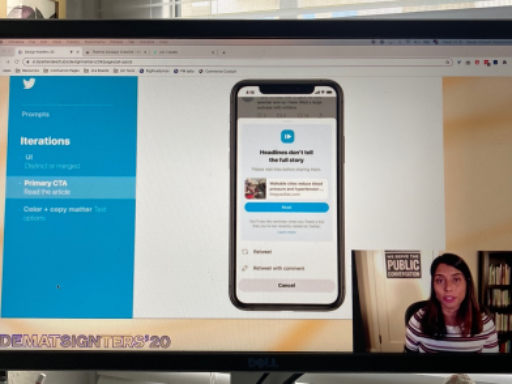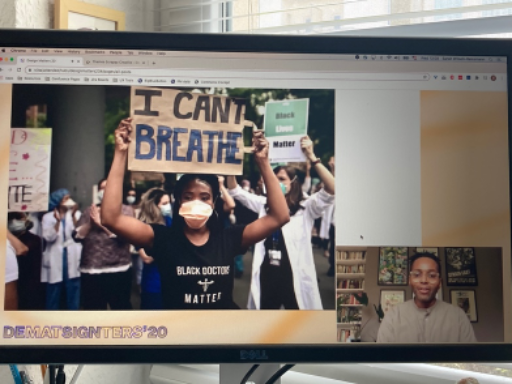Just when you thought you wouldn’t be able to attend any conferences or do any networking in this year of COVID-19, the Design Matters 2020 conference in Copenhagen decided to go hybrid. Disappointed to not be able to attend in person, last week I eagerly logged on remotely for the two-day conference from the comfort of my own home. Design Matters is a yearly conference bringing together “creatives” who are interested in exploring new movements in digital design. From UX designers to product designers to UI designers, anyone who “creates” digital products will find something to be inspired by.
A hybrid conference
Using the live-streaming platform vi.to and guided by live stream host André Cardoso, those of us participating remotely enjoyed main stage talks, online-only workshops, and interviews with speakers. All talks fell under the three themes of this year’s conference: “Real Fake”, “Next Gen Design”, and “Scrappy Creative”.
Logging on to the remote version of @designmattersdk 2020- they’ve done a great job of keeping those of who have to be remote connected and building the conference vibe 💚 @andre_mc is killing it as Live Stream host pic.twitter.com/gciEdkGALd
— Sarah WR 👩🏼💻 (@uxerexuser) September 23, 2020
Real Fake
Real Fake talks explored the way that recent digital products have blurred the lines between what is real and what is artificial. It is no longer black and white – things such as face filters and avatars mean that entities can be a blend of realness and fakeness. As Design Matters co-founder Ingrid Haug stated in her welcome talk, “we need a new visual language for true and false.”
Talks from designers such as Simone Rebaudengo from oio.studio explored the ever-changing boundaries between products and people. With robots like the GPT-3 writing articles in the Guardian, it has never before been so true that we as designers have a responsibility to support users in determining what is real.
Another highlight was a talk from Anita Patwardhan Butler from Twitter, who presented a case study of managing the spread of misinformation on Twitter. They found that many “fake news” articles were being retweeted before the user had even read the article, and they worked to “balance flow and friction” and create an additional step in the re-tweeting process to invite users to read articles before they shared them.
Next Gen Design
Next Gen Design talks included the future of design, from treating schizophrenia with virtual reality (VR) to designing beyond the screen with speculative design such as interactive cooking program prototypes that meal plan and teach a user how to cook.
Scrappy Creative
Finally, Scrappy Creative talks challenged us to reconsider our roles and our design methods. Addressing topics such as inclusivity, ethics, and sustainability, the talks in this theme were particularly inspiring and motivating. Kevin Bickham of McKinsey Design introduced the concept of unbiased design and why it matters, inviting participants to explore the ways in which they have unearned power as designers. For example, when we conduct UX research, how much are our own personal biases influencing the way we analyze the needs and behaviors of users that are different from us? A subsequent online-only workshop with moderators from McKinsey challenged us in small groups to see how we might be perpetuating stereotypes and anti-black discrimination in our design processes and working environments.
Practical takeaways
The conference wasn’t just high-level inspiring talks; there were also very tangible and practical learnings. One such talk was by Vitaly Friedman of Smashing Magazine, a well-known UX website based in Freiburg. In his talk about designing usable web forms, he highlighted the research his company has done on UX best practices for form inputs and gave a plethora of useful advice about how to improve the experience of filling out a form for our users.
Summary
The hybrid conference was a great success and I felt only disappointed that I couldn’t be there in person. Networking was more challenging remotely, but possible. I took a lot of inspiration and practical advice with me I can use in my daily work at ePages and look forward to attending in person next year (fingers crossed!)



